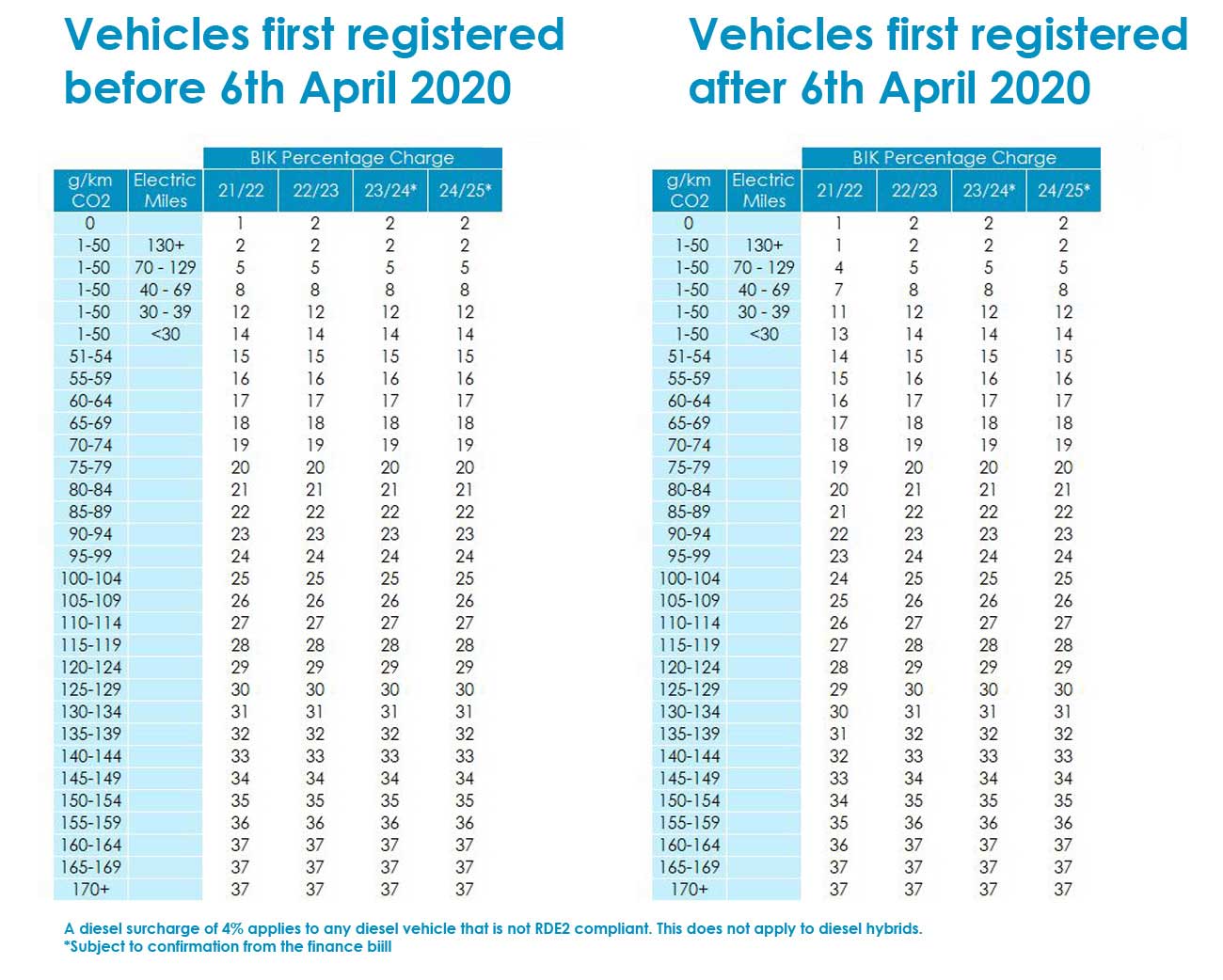January 18, 2021
Abby Nuttall
Driver Articles
Benefit in Kind tax, also known as BIK is the tax applied to benefits like a company car for the employee.
How Is BIK Calculated?
BIK is based on three factors, the vehicle’s official value, also known as the P11D, the BIK rate which is based on CO2 emissions and the individual’s personal tax rate.
The P11D is the price of the car including any additional extras added but minus the non-taxable parts of the vehicle. Non-taxable parts include the first year’s road tax and first registration fee.
You then take a percentage of this. The percentage that you pay is based on the vehicle’s CO2 emissions and fuel type is known as the BIK or company car tax rate. You can see all of these on the table below.
You then multiply this figure by the driver’s personal tax rate which is usually 20%, 40% or 45%.
So, if you have a P11D of £21,000 and it’s got a BIK rate of 23% the BIK value will be £4,830. You’ll then need to multiply this by the driver’s personal tax rate to get the amount they pay. For example, if their tax rate was 20% they would pay £966 over the year.
BIK Rates
The CO2 emissions component of the tax rates is designed to encourage the uptake of greener vehicles, whether fully electric, hybrid or those with lower emitting combustion engines.
In April 2020 the UK government confirmed the change to BIK tax rates from the CO2 emission figures provided by NEDC data to the newly introduced WLTP figures.
WLTP emission tests are designed to provide varied real-world testing and so provide more accurate emission data. With this change in testing we saw a lot of cars emission figures become higher, which is in part why the BIK rates are gradually increasing over the next couple of years.
Alongside the change to the emission figures, we also saw a bigger push towards electric vehicles in the BIK rates with fully electric models rated at 0% for the current year and only rising by 1% for each of the next two years.
Hybrids are also charged at a lower rate depending on how far their electric range is at between 0 and 13% this current year. So, if you are considering a hybrid vehicle then it might be best to look at a PHEV as these tend to have a longer electric range.
BIK rates are updated each financial year and so run from the beginning of April until the end of March the following year.
The rates are broken down by the level of CO2 emissions and for diesel vehicles whether they are RDE2 compliant or not. From this month all new cars on sale in the UK need to be RDE2 compliant so if you are looking at a new vehicle that is registered after the 31st of December 2020 then it will be RDE2 compliant.
Please see the below tables of BIC rates. The table on the left is for vehicles first registered before the 6th of April 2020, when the NEDC testing results would still apply. The table on the right is for vehicles registered after that date when the WLTP came into play.
 We’re working hard behind the scenes to build a calculator so you can calculate the BIK tax rate on any vehicle. Until that’s up and running though if you have any questions about a new Wessex Fleet vehicle and the BIK rate for it them please contact us on 01722 322 888.
We’re working hard behind the scenes to build a calculator so you can calculate the BIK tax rate on any vehicle. Until that’s up and running though if you have any questions about a new Wessex Fleet vehicle and the BIK rate for it them please contact us on 01722 322 888.
